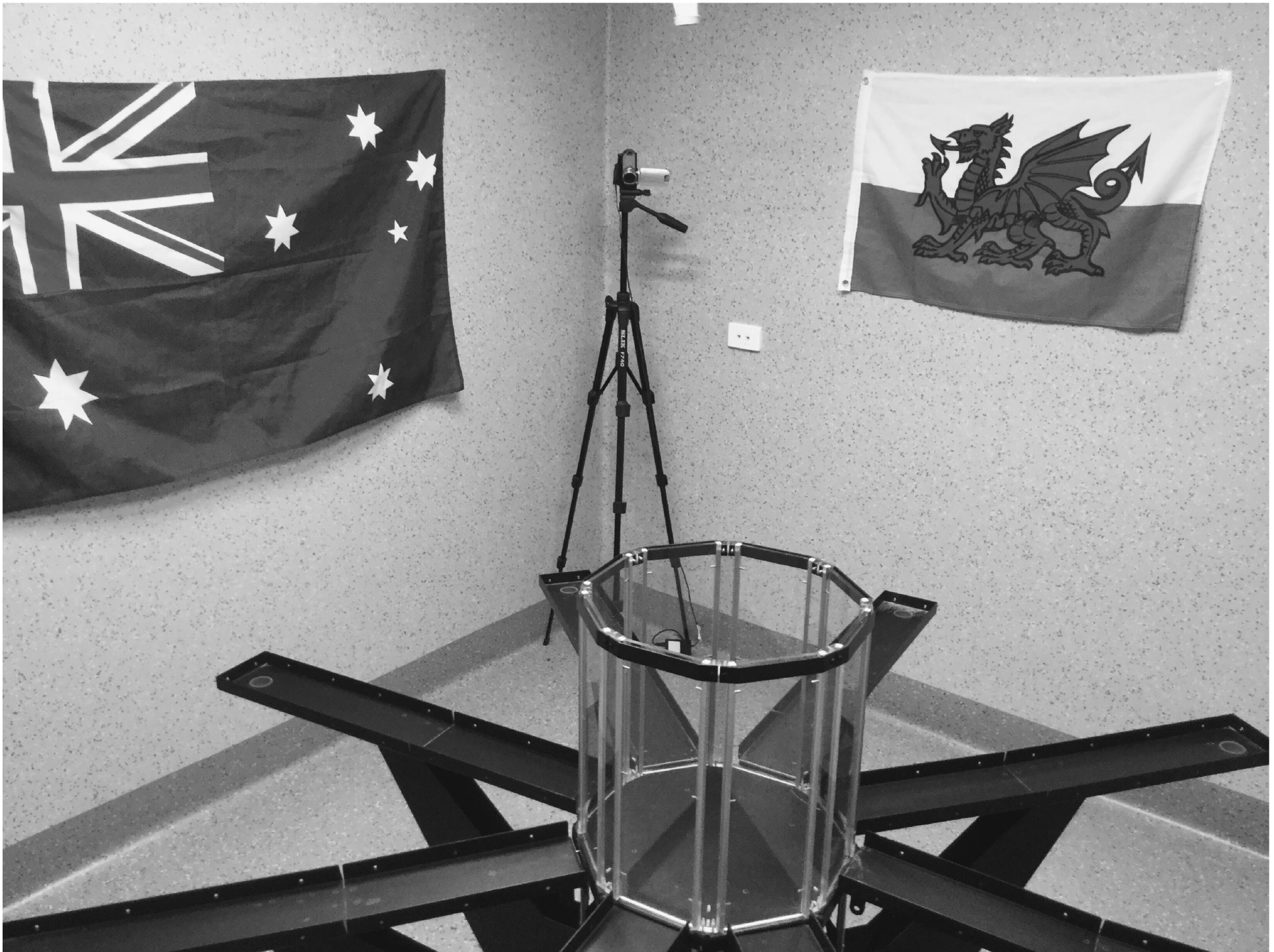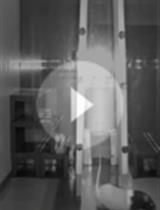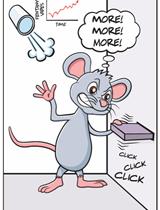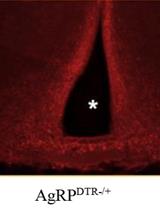- EN - English
- CN - 中文
Delayed Spatial Win-shift Test on Radial Arm Maze
采用旋臂迷宫的延迟空间Win-shift试验
发布: 2016年12月05日第6卷第23期 DOI: 10.21769/BioProtoc.2053 浏览次数: 13979
评审: Xi FengXiaoyu LiuMarina Allerborn
Abstract
The radial arm maze (RAM) is used to assess reference and working memory in rodents. This task relies on the rodent’s ability to orientate itself in the maze using extra-maze visual cues. This test can be used to investigate whether a rodent’s cognition is improved or impaired under a variety of experimental conditions. Here, we describe one way to test spatial working and reference memory. This delayed spatial win-shift (DSWS) procedure on the RAM was adapted from Packard and White (1990). The win-shift component of the test refers to the alternation of baiting, or rewarding, arms during the trial and test phase. The rodent is required to hold spatial information both within the task and across a delay to obtain the food-pellet reward (Taylor et al., 2003b). This task measures the incidence and type of memory errors made by the rodent both in the training and test phases of the learning task. A working memory error (re-entry of an arm that has been baited) can occur in both phases of the task, whilst a reference memory error (entry into an arm that has been baited during the training phase and is no longer baited) can only occur during the test phase.
Keywords: Delayed spatial win-shift (DSWS) (延迟空间win-shift (DSWS))Background
The radial arm maze (RAM) can be used to examine the effects of hippocampal and prelimbic cortex (PLC) damage, ageing, as well as a variety of pharmacological agents (Wenk, 2001; Taylor et al., 2003b; Floresco et al., 1997; Vann et al., 2003). The hippocampus is widely accepted to be involved in both spatial working and reference memory. Lesions to the hippocampus in rodents have shown impairments in the ability to perform memory tasks, including the RAM, involving spatial navigation (O'Keefe and Nadel, 1978; Morris et al., 1982). The PLC region of the rat prefrontal cortex, the approximate equivalent of primate dorsolateral region of the prefrontal cortex (Groenewegen, 1988), is also involved in spatial working memory (Robbins, 1990). Taylor et al. have demonstrated that rodents with lesions to the PLC make more spatial reference and memory errors compared to controls in the delayed spatial win-shift (DSWS) procedure on the radial maze (Taylor et al., 2003b). The traditional RAM studies an animal’s explorative behaviour during the task, particularly investigating working memory (Seamans et al., 1995). The adaptation of the task to include the DSWS element is a well-established procedure in the literature. This technique investigates the rats’ ability to retain spatial information both within the task and across a delay (Taylor et al., 2003b; Lapish et al., 2008; De Luca et al., 2016).
Materials and Reagents
- Paper towels for cleaning the maze with ethanol
- Rats: Our experiments were conducted using 10-week old male Wistar rats but other rodents can be used. If using females, estrous cycle stage should be taken into consideration since spatial reference memory is attenuated during the pro-estrous phase of the cycle (Bowman et al., 2001; Pompili et al., 2010). If using young rats or adult mice, a mouse RAM of smaller dimensions should be used, see below.
Notes:- The rats are housed under normal controlled laboratory conditions, in weight-matched pairs, under a 12 h dark/light cycle, with ad libitum access to food and tap water prior to the task. The testing protocol should be undertaken during the light phase of the 12 h light cycle between 0700 and 1900 h. Circadian rhythm does not need to be accounted for throughout the experiment as the rodents undergo bi-daily sessions across a large part of the 12 h light phase. To ensure there are no time biases between the groups, spread the testing of control and treated rodents throughout the day.
- During the testing protocol, access to food should be restricted to 80% of the rat’s usual food intake to encourage food-seeking behaviour in the maze. Adult (10-week old) male Wistar rats have an approximate daily food intake between 15-20 g during the 12 h dark phase and around 7 g during the 12 h light phase. Adult female Wistar rats have an approximate daily food intake between 10-15 g during the 12 h dark phase and around 5 g during the 12 h light phase (Stefanidis and Spencer, 2012).
- Prior to commencement and throughout the experiment, normal controlled laboratory light settings should be in place. The maximum allowable light intensity is equivalent to 300 lux at one meter height. There is no additional light source during the experimental protocol to alter the locomotor activity of the rodent.
- The rats are housed under normal controlled laboratory conditions, in weight-matched pairs, under a 12 h dark/light cycle, with ad libitum access to food and tap water prior to the task. The testing protocol should be undertaken during the light phase of the 12 h light cycle between 0700 and 1900 h. Circadian rhythm does not need to be accounted for throughout the experiment as the rodents undergo bi-daily sessions across a large part of the 12 h light phase. To ensure there are no time biases between the groups, spread the testing of control and treated rodents throughout the day.
- Ethanol, 70% (v/v), diluted in distilled water
- Standard chow grain pellets (45 mg) (Bio-Serv, USA)
Equipment
- RAM
The task is carried out in an eight-arm radial maze (Lafayette Instrument Company, USA), consisting of an octagonal central platform (34 cm diameter) and eight equally-spaced radial arms (87 cm long, 10 cm wide). At the end of each arm is a food well (2 cm in diameter and 0.5 cm deep; Figure 1). At the entrance to each arm is a clear Perspex door that controlled access in and out of the central area. Each door is controlled by a computerized control system (Lafayette) enabling the experimenter to regulate access to the arms. Salient visual cues of different geometric shapes and contrasting colours are placed around the maze on the walls of the room.
Note: If using young rats or adult mice, a mouse RAM of smaller dimensions should be used. The central platform should be approximately 22 cm in diameter with arms 25 cm long, 6 cm wide and 6 cm high that is transparent to enable the mice to see extra-maze visual cues (Crusio and Schwegler, 2005). The mouse RAM, should be placed on the floor to avoid elevation-induced anxiety (Crusio and Schwegler, 2005). - Digital video camcorder. In this experiment a Canon Legria FS200 was used. However, any camcorder can be used.
- Tripod. The video camcorder is attached to a tripod or to the ceiling to allow recording of the entire maze.

Figure 1. Radial Arm Maze (Lafayette Instrument Company) with automated Perspex doors and spatial cues placed around the maze. The camcorder is placed on the tripod facing downwards (approximately 45° to the maze). The camcorder can also be attached to the ceiling directly above the maze.
Procedure
文章信息
版权信息
© 2016 The Authors; exclusive licensee Bio-protocol LLC.
如何引用
De Luca, S. N., Sominsky, L. and Spencer, S. J. (2016). Delayed Spatial Win-shift Test on Radial Arm Maze. Bio-protocol 6(23): e2053. DOI: 10.21769/BioProtoc.2053.
分类
神经科学 > 行为神经科学 > 实验动物模型 > 小鼠
神经科学 > 行为神经科学 > 认知
您对这篇实验方法有问题吗?
在此处发布您的问题,我们将邀请本文作者来回答。同时,我们会将您的问题发布到Bio-protocol Exchange,以便寻求社区成员的帮助。
提问指南
+ 问题描述
写下详细的问题描述,包括所有有助于他人回答您问题的信息(例如实验过程、条件和相关图像等)。
Share
Bluesky
X
Copy link















